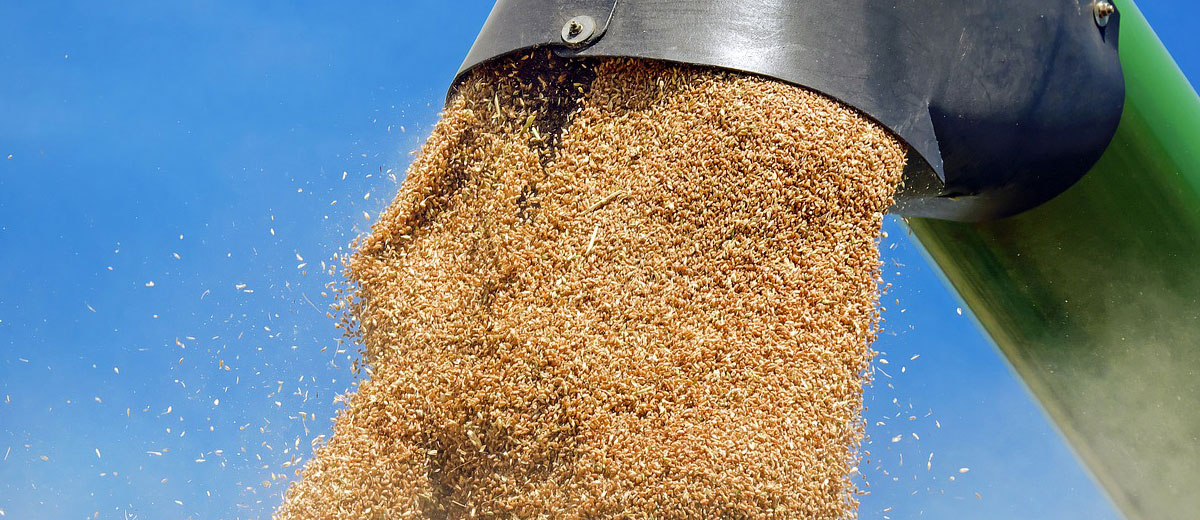
Testing Your Grain for 2022
Do you know what’s in your grain bin?
Matthew Struthers, AAg, Crops Extension Specialist, Moose Jaw
Dec 2021
The 2021 growing season was full of challenges for Saskatchewan producers who saw their crops experience drought, extreme heat, relentless winds and damaging pest populations. Looking forward to 2022, producers have many things to consider as they plan their crop rotations. One of the most important things is the quality of seed available in their bins for next year.
Drought and heat stress left much of the grain harvested in 2021 small and shriveled and there are concerns that these stresses will impact the seed’s ability to establish a productive crop in 2022. Producers need to test the grain they plan on using for seed next year to determine its quality. They must also ensure that they follow the right drying and storage guidelines to maintain seed quality throughout the winter.
What will a seed test tell you?
The drought and extreme heat during the critical flowering stage of crops may have led to poor germination and vigor of bin-run seed from the 2021 harvest. Seed testing can determine germination, vigor, thousand kernel weight and identify any seed borne pathogens on the seed.
A germination test gives producers an indication of the percentage of seeds that will grow in an ideal environment while a vigor test will indicate how well the seedlings will perform under stressful growing conditions. Combining the results from these two tests provides a good idea of how well your seed will perform. Preferably, the germination rate of a sample should be higher than 85 per cent, with the vigor being close to the same value. If there is a variation between the two values, it should not be more than 10 per cent. A large difference can indicate issues with the seed or improper storage conditions over the winter.
Testing well ahead of spring will provide more time to source higher quality seed if needed and will ensure there is time to obtain seed from suppliers if localized shortages occur. It is essential that producers find out the quality of their bin-run seed sooner rather than later to avoid a disruption of seeding due to seed shortages. Germination and vigor can change throughout storage, so it is very important to re-test stored grain closer to the spring to detect any large changes in seed quality and identify any potential issues before seeding begins. Always have a backup plan in case your desired seed variety is unavailable. Use the Interactive SaskSeed Guide to connect with Saskatchewan seed growers and begin planning your 2022 growing season early.
A seed quality test will also evaluate what seed-borne diseases are present in your sample. There are several diseases of importance depending on the type of grain being sampled. After a drought year, it is unlikely that seed-borne diseases will be highly prevalent in bin-run seed but only a seed test will give an accurate indication of what is present and allow you to manage it. If forced to use seed that is high in disease and low in germination or vigor, a higher seeding rate will be required to achieve the target number of plants per square foot. Increasing the seeding rate will also increase the level of disease inoculum in your soil, therefore it is recommended that a seed treatment be used every time diseased seed is being used as seed.
Seed tests do have limitations when it comes to results since samples submitted to the seed lab are only a small fraction of the larger seed lot. For example, a test result that shows a zero per cent for disease, does not necessarily guarantee the entire lot is free of that disease. Failure for a test to detect infection may be due to the statistical nature of the small sample that is submitted for testing, so it is critical to make sure that a proper representative sample is taken from the bin.
A list of accredited seed testing laboratories can be found on the Canadian Seed Institute website. More information on seed-borne diseases for cereals and pulses can be found on our Crops and Irrigation webpage.
Implications with poor seed in 2022
Due to the current high grain prices and the opportunity to receive significant value on the market, producers will likely save their lowest valued grain to be used for seed in 2022. It is critical that this seed is tested to determine if the seed has weak vigor, poor germination or mechanical damage. Based on these test results, producers will know if additional seed will have to be sourced for the 2022 growing season.
A large concern going into 2022 is the amount of fertilizer that was not broken down and is still bound by the soil due to the lower-than-average precipitation and high temperatures throughout the 2021 growing season. Come spring, this left-over abundance of nutrients may cause issues with toxicity if the concentration of nutrients is too high and if the seed is too low in germination and vigor. Producers will have to use the results of their soil sampling and seed quality tests to determine if the seed in their bin will be useable for the upcoming year. For many producers the amount of fertilizer that can be safely placed in the seed row will be greatly reduced and they will have to decide to apply any additional fertilizer later in the season if moisture is received.
Another large seed quality concern following the 2021 harvest is mechanical damage in pulses. The overly dry growing and harvesting conditions resulted in brittle seed coats that have caused pulse crops such as field peas to split. Pulse crops that were harvested at very low seed moisture levels should have the mechanical damage levels assessed through a germination test. Producers who have brittle pulse seed should take extra precautions when handling or moving the seed, especially when using augers. Simply lowering the speed of augers will minimize the amount of damage inflicted on the seed.
Storing seed properly
Though most grain that came off the field in 2021 was dry compared to previous years, there are still considerations to make when storing it for use next year. Grain should be dried down to the proper moisture content to prevent spoilage and maintain its quality throughout the fall, winter and early spring. Lowering the moisture content will help sustain seed quality by lowering the potential for fungal growth, insect infestations and oxidation inside the bin. When drying your grain, it is important to stay within the recommended temperature thresholds to ensure that the seed is not exposed to high temperatures that can lead to detrimental effects on germination and viability. If temperatures exceed the recommended thresholds, then it is important to determine the percentage of seed that was damaged. This can be done through a seed test for germination and vigor levels. If the damage is too great an alternative seed source should be considered.
For more information on safe temperatures and moisture content of grain, visit the Canadian Grain Commission website. It is very important to keep the conditions inside your bins at the optimal levels to ensure grain quality is not affected.
The drought of 2021 will have long lasting effects that will carry over into 2022, do the best you can to prepare for any issues that may arise. Store your grain under the proper conditions and get your seed tested during the winter to identify any issues now and allow for enough time to secure a new seed source. Re-test your seed in the spring to address any large changes to its germination, vigour and level of disease throughout storage. Get a soil test to determine any problems in your nutrient management plan due to any unused fertilizer left over in or on the soil that will affect the amount of fertilizer you can apply. These considerations need to be made well in advance of the 2022 growing season to allow the best chance to maintain your current level of quality or identify if you need to acquire new seed for the spring. With a possible seed shortage, it is recommended to begin your search as soon as possible to eliminate any interruptions to seeding operations in the spring. If you are unsure about your test results for both your seed quality or soil nutrient analysis reach out to your agronomist or contact the Agriculture Knowledge Centre at 1-866-457-2377 to speak with a crops extension specialist.








































